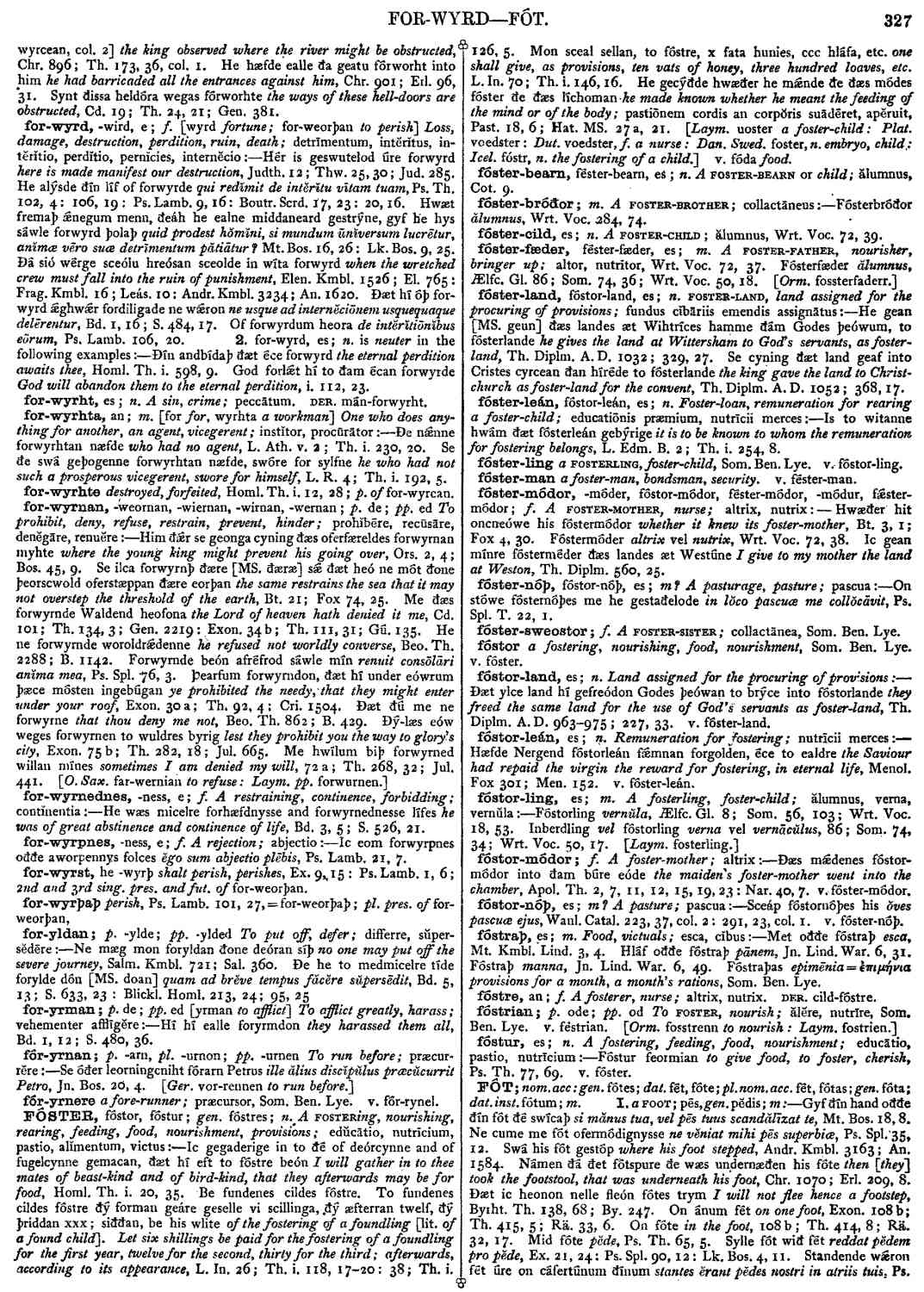FÓT
- noun [ masculine ]
-
Gyf ðín hand oððe ðín fót ðé swícaþ
si mănus tua, vel pēs tuus scandălīzat te,
- Mt. Bos. 18, 8.
-
Ne come me fót ofermódignysse
ne vĕniat mihi pēs superbiæ,
- Ps. Spl. 35, 12.
-
Swá his fót gestóp
where his foot stepped,
- Andr. Kmbl. 3163 ;
- An. 1584.
-
Námen ðá ðet fótspure ðe wæs undernæðen his fóte
then [they] took the footstool, that was underneath his foot,
- Chr. 1070 ;
- Erl. 209, 8.
-
Ðæt ic heonon nelle fleón fótes trym
I will not flee hence a footstep,
- Byrht. Th. 138, 68 ;
- By. 247.
-
On ánum fét
on one foot,
- Exon. 108 b ;
- Th. 415, 5 ;
- Rä. 32, 17.
-
Mif fóte
pĕde
,- Ex. 21, 41: Ps. Spl. 90, 12: Lk. Bos. 4, 11.
-
Standende wǽron fét úre on cáfertúnum ðínum
stantes ĕrant pĕdes nostri in atriis tuis,
- Ps. Spl. 121, 2 ;
- Cd. 19 ;
- Th. 24, 18 ;
- Gen. 379.
-
Sindon fealwe fótas
the feet are yellow
,- Exon. 60 a ;
- Th. 219, 22 ;
- Ph. 311: Ps. Th. 121,2: 131,7.
-
Ge-eádmédaþ oððe gebiddaþ fótsceamol his fóta
adōrāte scabellum pĕdum ejus,
- Ps. Lamb. 98, 5 ;
- Exon. 107 b ;
- Th. 410, 12 ;
- Rä. 28,15.
-
Ðe-læs hig mid hyra fótum hig fortredon
ne forte conculcent eas pĕdĭbus suis,
- Mt. Bos. 7, 6.
-
Hæfde gefeormod fét and folma
he had devoured feet and hands,
- Beo. Th. 1494 ;
- B. 745.
- 30, 1855.
-
Nigon fóta, and ix scæfta munda, and ix bere-corna
nine feet and nine half feet, and nine barley-corns or three inches,
- L. Ath. iv. 5 ;
- Th. i. 224, 9.
Bosworth, Joseph. “FÓT.” In An Anglo-Saxon Dictionary Online, edited by Thomas Northcote Toller, Christ Sean, and Ondřej Tichy. Prague: Faculty of Arts, Charles University, 2014. https://bosworthtoller.com/12072.
Checked: 1